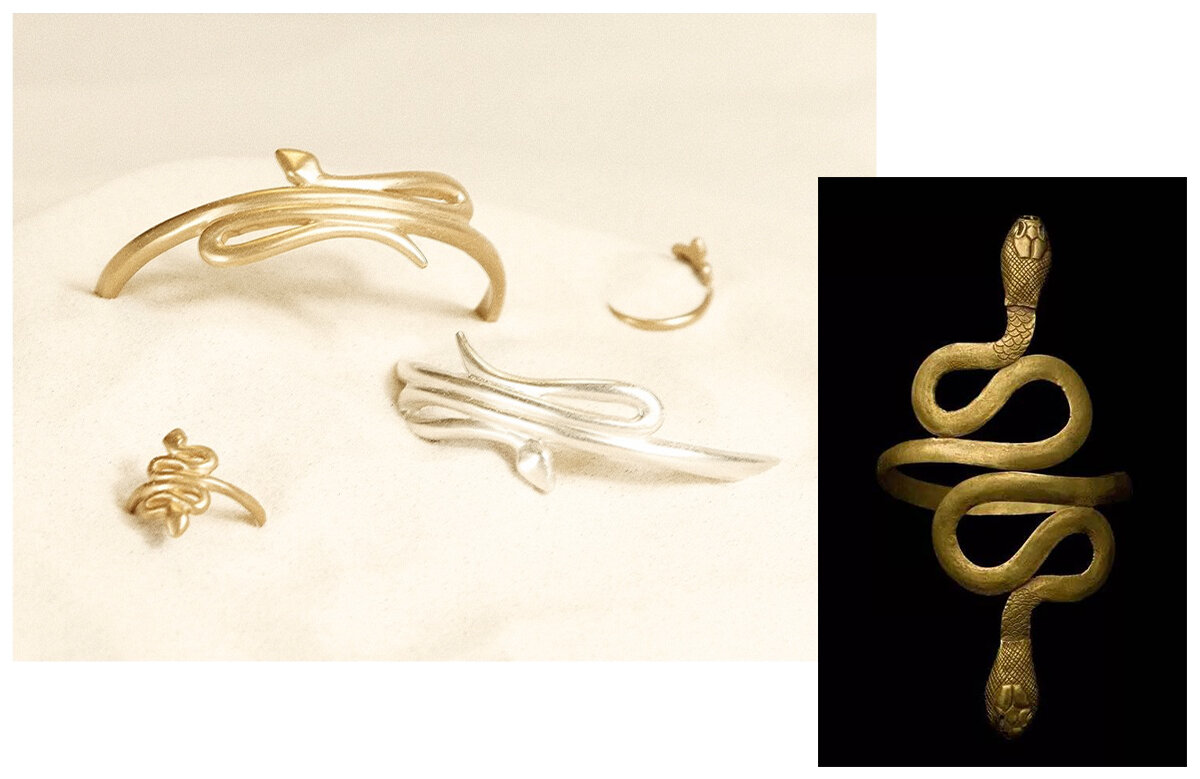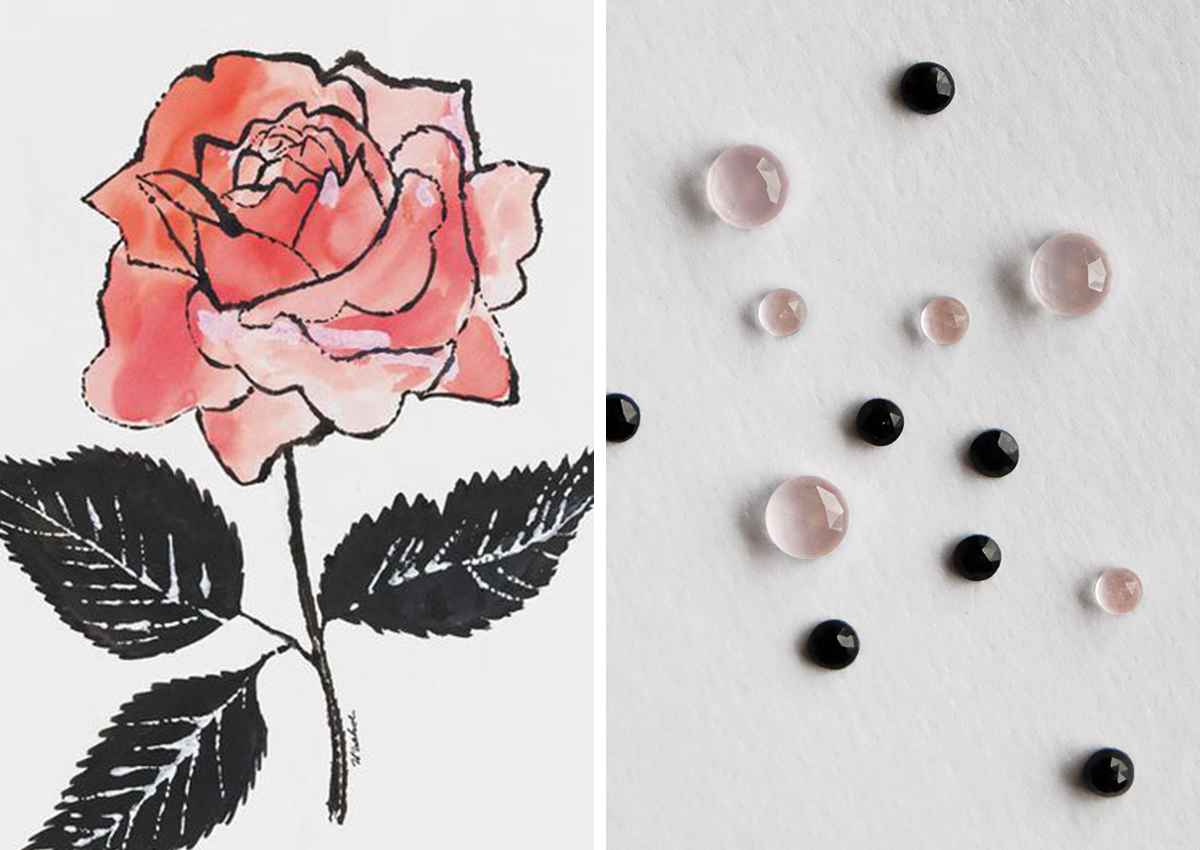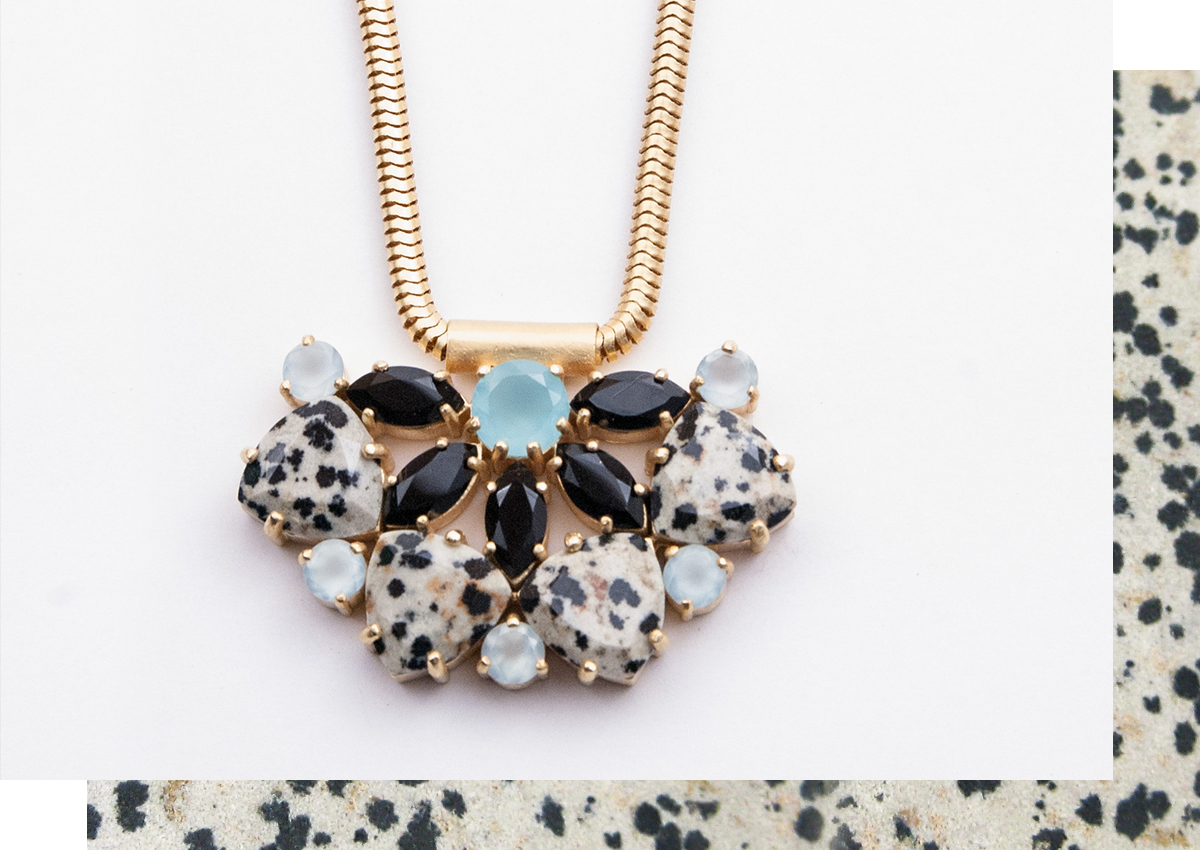Watching the incredibly glamorous and over-the-top Cleopatra, starring Elizabeth Taylor, sparked something in my brain. The costumes! The culture! The love story! Though much of it was 1960s Hollywood applying its shiny veneer to history, I wanted to know more about this woman, Egypt’s final ruler, and all the stories we still tell about her.
Image credits, clockwise from top left: Snake rings from The Metropolitan Museum of Art’s collection; Elizabeth Taylor in Cleopatra; Snake bracelet from Phoenix Ancient Art’s collection; Detail of “Death of Cleopatra” by Francesco Cozza; Illustration from John Edwards Holbrook’s “North American Herpetology”
Most tragically, her final story is one of star-crossed lovers meeting their end. She and Marc Antony, co-ruler of the Roman empire back in 30 BC, fell in love and joined forces against Octavian, Rome’s other co-ruler and eventual emperor. When Octavian’s forces defeated Marc Antony’s in a civil war, she and Marc Antony made a pact to end their lives instead of submitting to a new ruler. Marc Antony acted first, and upon hearing the news Cleopatra locked herself in a tomb with her two maids, using an asp’s poisonous bite to end her life.
Painters, sculptors, and playwrights have depicted Cleopatra’s life, with asps prominently featured every time. These snakes are especially meaningful considering how important they were in ancient Egyptian culture, represented by the goddess Wadjet and symbolizing a pharaoh’s divine authority. Worn as talismans, they were said to grant protection and health. Snakes have been important in other cultures, too, featured in creation myths, symbolizing rebirth and new beginnings, and said to bring good luck.
Left: Asp Bangles and Asp Rings from our Egyptian Asps Collection; Right: Snake bracelet from the Egyptian Museum in Cairo, photo by Kenneth Garrett
What started as an obsession with Cleopatra turned into an urge to make this ancient symbol into modern, wearable amulets. I hope you enjoy wearing these new versions from our mythically-inspired Egyptian Asps collection.








